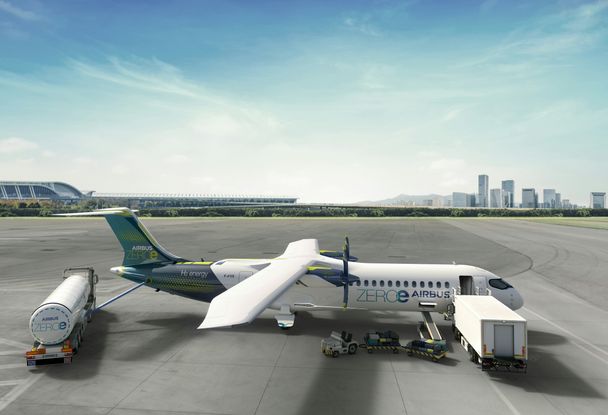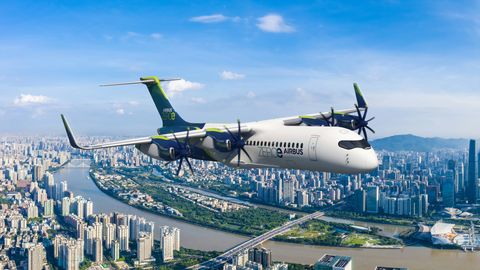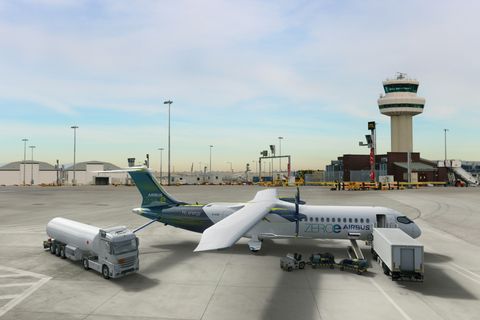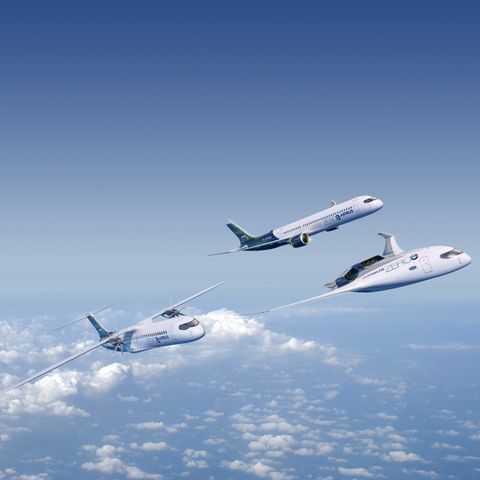Developing a global ecosystem to support hydrogen-powered flight
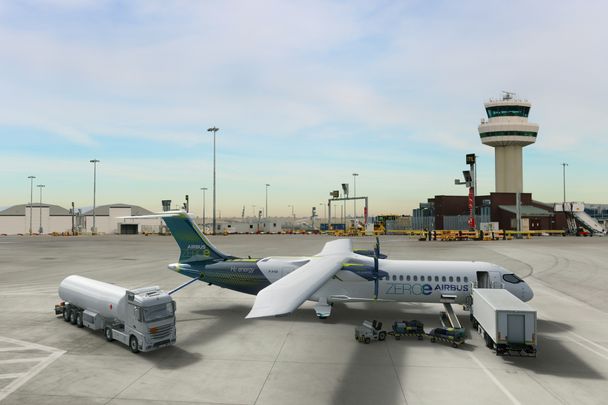
Airbus aims for hydrogen-powered aircraft to enter into service by 2035. While the engineering progress necessary to make this a reality is well underway, there is a second and equally pivotal half of development that must advance in tandem: the creation of a global hydrogen ecosystem.
The argument for hydrogen
Hydrogen is one of the most promising energy sources we have to decarbonise industrial processes. It produces little to no carbon dioxide emissions when used, and when made from renewable energy – known as green hydrogen – its carbon footprint is practically zero.
The cost of green hydrogen is expected to significantly decline as large-scale production accelerates to meet the growing decarbonisation needs of many different industries, applications and usages worldwide. Independent forecasts from the International Energy Agency (IEA), International Renewable Energy Agency (IRENA), and McKinsey predict that cross-industry scale-up will significantly reduce costs.
Indeed, renewable hydrogen will likely be a key factor in decarbonising many industries in the coming decades. But it has a particularly important role to play in helping the aviation industry reach its goal of achieving net-zero CO2 emissions by 2050. Hydrogen has a specific energy-per-unit mass that is three times higher than traditional jet fuel, making it a much more effective decarbonised energy source than batteries, for example.
Airbus has revealed four different hydrogen-powered aircraft concepts, and announced the goal of having one enter into service by 2035. But while pioneering hydrogen-powered flight technology is obviously the primary goal, securing the supply and distribution of hydrogen at airports is just as important to the success of the programme. What use is a hydrogen-powered aircraft if there are no accessible hydrogen supplies nearby to power it?
Hydrogen Hubs at Airports network
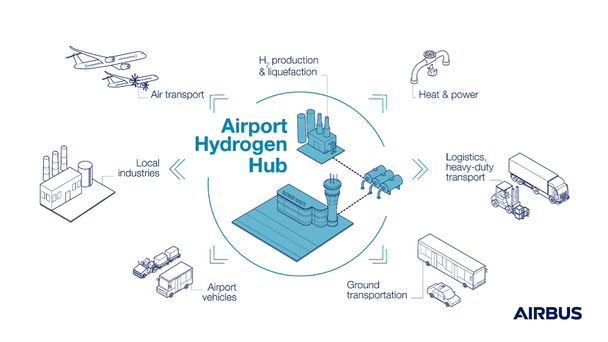
With that in mind, Airbus founded the Hydrogen Hubs at Airports network, a collaborative initiative where the Company is joining forces with airlines, airports, industry partners, energy providers and technology specialists to answer some primary questions: What impact will operating hydrogen-powered aircraft at airports have on infrastructure? Where will hydrogen produced from renewables come from? And how will it be distributed within the region?
To define the answers, Airbus and its partners are investigating the feasibility of hydrogen-powered aviation in terms of developing an ecosystem of decarbonised facilities, ground operations and transportation at airports around the globe. This 360 degree approach looks beyond the airport to take into account other important factors such as where and how green hydrogen is produced, the cost and logistics of hydrogen supply and storage, and what kinds of long-distance pipelines and distribution networks could be necessary.
A walkthrough of an end-to-end hydrogen supply chain
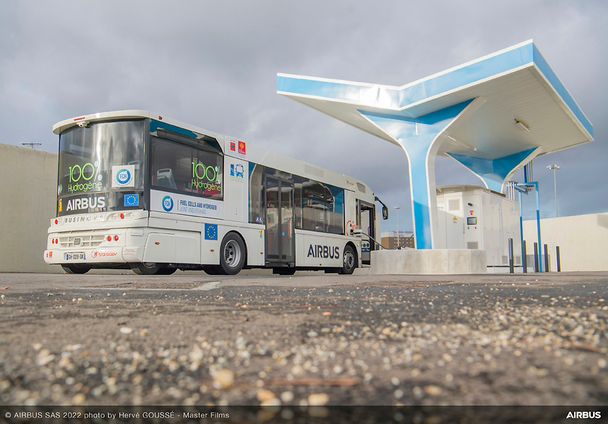
The first challenge to tackle is producing the hydrogen. Green or renewable hydrogen is made through water electrolysis that is powered by renewable or low-carbon electricity. It is the production method with the lowest carbon footprint, and the one that must be used to meet the goal of decarbonising aviation. Renewable hydrogen is first produced in gaseous form, and then liquefied as needed. These steps can be done at the same facility or separate ones.
Once the hydrogen has been produced, it needs to be transported. Several scenarios have been evaluated to supply these airports with liquid hydrogen, taking into consideration operation and cost efficiency. For lower demand, the hydrogen can already be transported in liquid form by truck, and even by ship (tanker ship prototypes are under development). For high levels of hydrogen demand, one economical solution consists of utilising and repurposing existing European and US pipeline networks that could efficiently carry large amounts of gaseous hydrogen over the long distances between the production centre and the airport. The liquefaction process would then take place at or close to the airport. Existing natural gas pipelines could transport hydrogen without requiring major modifications, and there are ambitious plans in both Europe and North America to build up new hydrogen pipeline networks. For example, in Europe, the European Hydrogen Backbone initiative is a masterplan for a continent-wide network of hydrogen infrastructure.
Once the hydrogen arrives at the airport, it would then be stored in highly insulated cylindrical “bullet” tanks. The additional infrastructure needed at this stage includes loading and unloading docks for the trucks, as well as vent masts to evacuate excess boil-off. The liquid hydrogen would then be used to not only power hydrogen aircraft, but ground transportation and airport vehicles as well.
A growing network yields key results

The Airbus hydrogen network currently counts some 215 airports and numerous energy providers and airlines as partners. While new partners are being recruited to join on a regular basis – in July 2024 alone, two Hydrogen Hubs were launched, one in Spain and another at Gatwick airport in the UK – the first partnerships are already yielding preliminary results that provide concrete learnings and guidance for how to best prepare for ZEROe’s entry into service in 2035.
For example, it has already been determined that operating a 100-seat hydrogen-powered aircraft is viable using remote hydrogen production and liquefaction, with airport supply delivered by truck. This supply pattern is the simplest to implement and the easiest to scale. In contrast, supporting 200-seat hydrogen-powered aircraft would ultimately require large-scale hydrogen infrastructure at the airport, as well as proximity to high-voltage power lines or hydrogen pipelines.
Price is also a key factor. While hydrogen has already been deployed at airports for non-aviation use (such as for ground transportation onsite), strong support for initiatives and incentives is still needed to make renewable hydrogen production and transportation economically competitive. Current price studies conducted by Airbus and its partners show a large range of hydrogen prices depending on location and availability of hydrogen production centres.
Finally, airlines themselves are important partners. They have a convening power, acting as network catalysts. Naturally, airlines share the ambition to reach net zero by 2050. This makes them key supporters of all decarbonisation levers, including hydrogen-powered aircraft.
Looking towards the future
There remains much to do between now and 2035 to support hydrogen-powered flight and the corresponding infrastructure on the ground. But the growing number of partners on this project demonstrate that it is not an isolated dream, but a shared one. As society turns to more sustainable energy sources to meet ambitious climate targets, the benefits of renewable hydrogen cannot be overstated. We look forward to welcoming new regions and partners to the Hydrogen Hubs at Airports initiative in the coming years, all working together with one goal in mind: to decarbonise the industry and see ZEROe take flight!
To see how Airbus envisions the future of hydrogen-powered flight, watch the fourth episode of the Countdown to ZEROe Series:
The countdown to ZEROe: Episode 4 : Making the right connection
Airbus' hydrogen-powered aircraft is taking shape. Last time, we talked about one of the most promising propulsion candidates. Discover now how Airbus is building the right hydrogen ecosystem all around the world to fuel our future aircraft by 2035.
